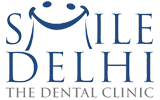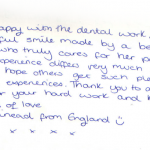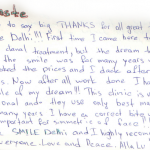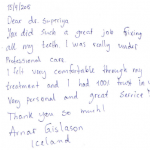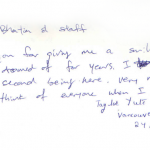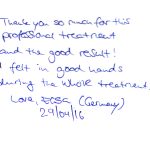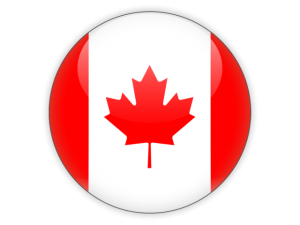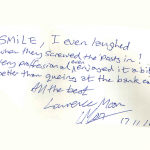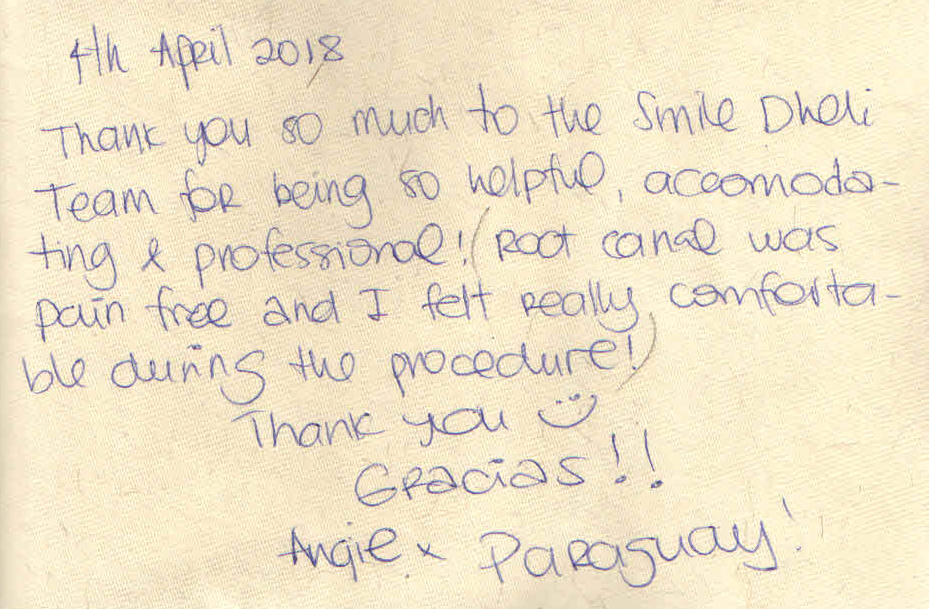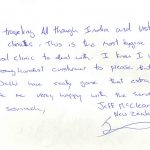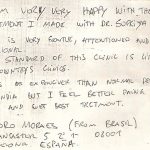Are Your Teeth Discoloured?
A tooth consists of three layers – enamel (outer layer), dentine (middle layer) and pulp (innermost layer). Any change to these structures is likely to cause an alteration in the outward appearance of the tooth.
Unsightly tooth stains can cause great embarrassment and keep people from smiling.
No one’s teeth are perfectly white, and to some extent our teeth will become a bit duller as we age. But depending on your genetic makeup, everyone is born with a slightly different tooth shade, with some fairing better than others. Regardless, how you treat your teeth will greatly determine the outcome of their color.
Unfortunately, for those who suffer from teeth discoloration, teeth can appear yellow, brown or even grayish in color. Some may have overall discoloration while others have dark spots on their teeth.
Tooth wear and gum recession can directly or indirectly affect tooth color. Your teeth can become discolored by stains on the surface or by changes in the tooth material.
The most common is a black stain. The stain is produced by bacterial action and iron in the saliva and gum exudates. Green stains are attributed to fluorescent bacteria and fungi. The organisms grow only in light and therefore cause staining on the front surface of the upper teeth. Orange stain is less common than green or brown stains.
The good news is you can prevent many of these stains. Once you understand what causes tooth discoloration, you’ll be better equipped to handle fighting off some of its culprits.
When trying to determine where tooth discoloration comes from, there are three main types of tooth discoloration-
Extrinsic discoloration Even though front of your teeth may look smooth, but in truth the enamel layer on your teeth is made up of a matrix of crystal like rods that under close inspection can have small pits or tiny indentations. Enamel is the hard shell on the outside of your tooth that protects the soft pulp on the inside, where the nerves and blood vessels are. Stains from foods such as coffee or red wine or any food or drink with dark pigments can get locked into these small catches, and over time your teeth will darken.
This type of staining is called extrinsic staining when the outer layer of the tooth(enamel) gets stained as it is caused when outside elements affect the surface of the teeth and stuck to the outside of the teeth. In dental clinics in Delhi and dental clinics in India, various procedures are being used to remove the stains known as surface stains. These procedures include simple cleaning/ scaling to teeth whitening / bleaching.
Brown spots on the teeth may also be due to poor oral hygiene which is the most common cause of extrinsic stains. They may be a sign of tooth decay (caries) or enamel demineralization.
Because saliva plays a major role in the physical removal of food debris and dental plaque, salivary dysfunction or diminished salivary output contributes to extrinsic discoloration. Decreased output may be caused by local disease (eg, salivary obstructions and infections), systemic disease (eg, Sjögren syndrome), head and neck radiation therapy for cancer, chemotherapy, and multiple medications (eg, anticholinergics, antihypertensives, antipsychotics, antihistamines).
The inability to remove stain-producing materials or the use of dentifrices with inadequate cleaning and polishing actions cause discolorations.
You can get this type of discoloration:
Food and Drink – Coffee, tea, soda, colas and red wine can cause tooth stains when consumed over a long period of time. Certain fruits and vegetables (for example, apples, berries, curries, soy sauce and potatoes can also stain teeth. Foods and drinks of extreme temperatures can also affect tooth color — the heat and cold open and close the pores in your teeth, allowing staining agents to attack them with greater force. Deposition of tannins found in tea, coffee, and other beverages cause brown stains.
Smoking or Tobacco – Smoking can greatly discolor teeth. But chewing tobacco isn’t much safer, any tobacco product can stain teeth and will have devastating effects on teeth. Tobacco stains from cigarettes, cigars, pipes, and chewing tobacco cause tenacious dark brown and black stains. Pan that is commonly chewed is used for its mild psychoactive and cholinergic effects, and it elicits a copious production of blood red saliva that results in a red-black stain.
 Dark brown black stains due to smoking
Dark brown black stains due to smoking
Poor Oral Hygiene – Generally speaking, bad oral habits will negatively affect your teeth’s health. Discoloration is just a minor side effect of inefficient dental care. Inadequate brushing, flossing and rinsing with an antiseptic mouth wash to remove plaque and stain-producing substances like coffee and tobacco can cause tooth discoloration. Accumulations of dental plaque, calculus, and food particles or debris cause brown or black stains.
Over time, this outside staining can permeate the teeth and dull the colour of the teeth. This is when the interior sections of the tooth (the dentin) darkens or gets a yellow tint.
This is now called Intrinsic (inside) discoloration and is much more difficult or takes longer to remove.
Teeth which are gray or have darkened in color are usually that way due to the incorporation of dark pigmented molecules or minerals or medications into the hard layers (dentin and enamel) of the teeth during their formation. Tetracycline antibiotics are frequently to blame. Also from saturation of iron from the bloodstream during periods of inflammation such as when there is trauma to the tooth.
You can get this type of discoloration:
- If you had too much exposure to fluoride during early childhood. Fluoride is incredibly important and good for your teeth in preventing tooth decay. But when young children ingest too much of the fluoride, it can lead to dental fluorosis, a condition that causes white spots or brownish-grey spots or lines that are uniformly distributed on the teeth. This is one of the reasons that parents must closely monitor young children as they brush their teeth. Also due to consumption of excess fluoride either from environmental sources (naturally high fluoride levels in water) or from excessive use (fluoride applications, rinses, toothpaste, and fluoride supplements taken by mouth) can cause teeth discoloration.
 White spots or brownish-grey lines due to fluorosis
White spots or brownish-grey lines due to fluorosis
- Dental Fillings – Tooth decay is often evident in brown or black spots on teeth. A large silver amalgam tooth filling can also cause outlying enamel to appear gray.
- From dental conditions such as enamel hypoplasia can also cause an irregular pitting/stained appearance in the enamel of one or more teeth.
- Dental decay – White spot lesions on teeth appear as frosted areas of tooth enamel, and often represent the earliest form of tooth decay (enamel demineralization). As plaque acids and acids from food and drink begin to dissolve tooth enamel, the tooth surface takes on an etched, matte appearance. At a microscopic level, the smooth enamel becomes roughened and plaque adheres to it more readily. White spot lesions soon begin to pick up stain from coffee, tea, tobacco and food coloring additives. This may make them appear yellow to brown in color.
- If your mother used tetracycline antibiotics during the second half of pregnancy or other complications of pregnancy, like certain infections in pregnant mothers can cause tooth discoloration in the infant by affecting enamel development.
- If you used tetracycline antibiotics when you were 8 years old or younger.
- Other disorders like bleeding disorders (such as sickle cell anemia, thalassemia), bile duct problems and several diseases that affect enamel (the hard surface of the teeth) and dentin (the underlying material under enamel) can lead to tooth discoloration. In addition, treatments for certain conditions can also affect tooth color. For example, head and neck radiation and chemotherapy can cause teeth discoloration.
- If you had trauma that affected a tooth when you were a young child. A fall, for example, may damage the developing, yet unerupted tooth, for example, damage from a fall can disturb enamel formation in young children whose teeth are still developing. If you had trauma in a permanent tooth and internal bleeding discolored the tooth. Chipped teeth or broken teeth can darken due to enamel damage or a dead nerve. This teeth discoloration is also possible if a tooth is not capped following major dental surgery, such as a root canal.
- Genetic defects and hereditary diseases like those affecting enamel and dentin development or maturation. If you were born with a rare condition called dentinogenesis imperfecta. This causes gray, amber or purple discolorations.
- Medications – Antibiotics such as tetracycline and doxycycline can cause discoloration in children whose teeth are still forming (before the age of 8). Other drugs, including antihistamines, antipsychotic and drugs for high blood pressure may also cause staining. Some mouthwashes containing chlorhexidine and cetylpyridinium chloride may also leave behind teeth discoloration.
- Intrinsic staining doesnot go with just scaling or teeth whitening. Dentist in Delhi, especially in reputed dental clinics like ‘Smile Delhi‘ , are putting ceramic veneers to correct the intrinsic discolouration. Infact, smile makeovers are a routine procedure in dental clinics in Delhi where people want to improve their smiles. Even the dental clinics in smaller cities in india are offering cosmetic dentistry to improve smiles.
Age-related discoloration – This is a combination of extrinsic and intrinsic factors. Unfortunately most people’s teeth will not age gracefully. Everyday wear and tear will contribute to tooth discoloration over time and as you age, over time the outer layer of enamel on your teeth gets worn away revealing the natural yellow color of dentin (the middle layer). Yellow teeth usually represent a normal variation in tooth shade, and are generally of no medical consequence. Teeth naturally darken and yellow as they age, because the enamel that covers the teeth gets thinner with age and dentin layer under the enamel shell continues to develop and thicken over the course of the patient’s lifetime which allows dentin to show through. Dentin formation accelerates in response to stresses placed on the teeth, as may occur when the patient chronically grinds their teeth (bruxism). This can also produce yellowing. Foods and smoking also can stain teeth as people get older. Finally, chips or other injuries can discolor a tooth, especially when the pulp has been damaged.
Prevention
Although some tooth discoloration is inevitable, there are ways to prevent it. By making a few simple lifestyle changes, you may be able to prevent teeth discoloration. Brushing your teeth after every meal will help to prevent some stains.
We recommend that you rinse your mouth with water after having wine, coffee or other drinks or foods that can stain your teeth and avoid consuming them on a regular basis. Don’t smoke or chew tobacco, and practice excellent dental hygiene by brushing, flossing and using mouth wash daily and professional cleanings by a dentist every 6 months also will help to remove surface stains.
Intrinsic stains that are caused by damage to a nerve or blood vessel in a tooth sometimes can be prevented. You may need to have root canal treatment to remove the inner part of the tooth (the pulp) before it has a chance to decay and darken. However, teeth that have root canal treatment may darken anyway. To prevent intrinsic stains in children, avoid too much early exposure to fluorides. Once the enamel is formed, fluoride will not discolor teeth.
Ask your doctor if any medications you are taking result in tooth staining as a side effect. And have dental X-rays taken during your exams to check for any signs of trauma.
Treatment
Many extrinsic stains caused by food and drink can be removed by regular professional cleanings and home care. Good home care includes brushing, flossing and rinsing after every meal.
If your tooth has darkened after a root canal, bleaching the enamel won’t help. Your dentist can apply a bleaching material to the inside of the tooth, or you may consider a crown or veneer.
If you already have tooth discoloration and brushing doesn’t seem to work, there are ways to help you get rid of it. Thanks to cosmetic dentistry, there are several options for removing or covering tooth stains.
Various treatment options are available in dental clinics in Delhi, to brighten teeth. They vary depending on the cause of the discoloration and may include:
- Ultrasonic Cleaning – Now a standard form of professional dental cleaning, ultrasonic vibrations are used to remove some extrinsic stains caused by a buildup of calculus. Although it won’t change the color of your teeth, an ultrasonic dental cleaning can be performed during regular dental visits to limit tooth stains.
- A tooth can be covered with a color-matched composite bonding material.
- Teeth Whitening agents and procedures– To completely lighten your teeth, you can try teeth whitening. Discoloration often can be removed by applying a bleaching agent to the enamel of the teeth. One technique is called “power bleaching.” With this method, the dentist applies a light-activated bleaching gel. It causes the teeth to get significantly whiter in about 30 to 45 minutes. Several follow-up treatments may be needed.
- Laser Teeth Whitening — Like teeth whitening, laser teeth whitening uses a peroxide gel to lighten teeth. But laser tooth whitening is done in the dental office in about an hour. After the gel is applied to teeth, a laser uses heat to activate the teeth whitening agents, with excellent results in a shorter amount of time.
- Dental Veneers – Bleaching or whitening just won’t work or will not lighten some stains, such as tetracycline stains. In this case, your dentist may recommend covering the discolored areas. Veneers can completely cover tooth discoloration. Dental veneers are wafer-like tooth coverings often made of porcelain that are cemented onto teeth. This also may be useful when the tooth is chipped, slightly crooked or badly damaged.
Despite some reported sensitivity which can be taken care of by a medicated toothpaste, all of these procedures are safe and effective in treating teeth discoloration when administered by a dental professional.
So a bright white smile is possible for anyone at any age, thanks to the advanced cosmetic dental procedures being offered by dentists . Reputed, Dental clinics in Delhi, like ‘Smile Delhi‘, are regularly seeing an inflow of patients coming from abroad, to get cosmetic dental treatments here like dental veneers , teeth whitening etc here due to the advantage of the Asian currency for global standard work, as India is not making any dental materials. In standard dental clinics in India, the materials being used are from America/ Europe.
Posted By – Dr. Shriya
